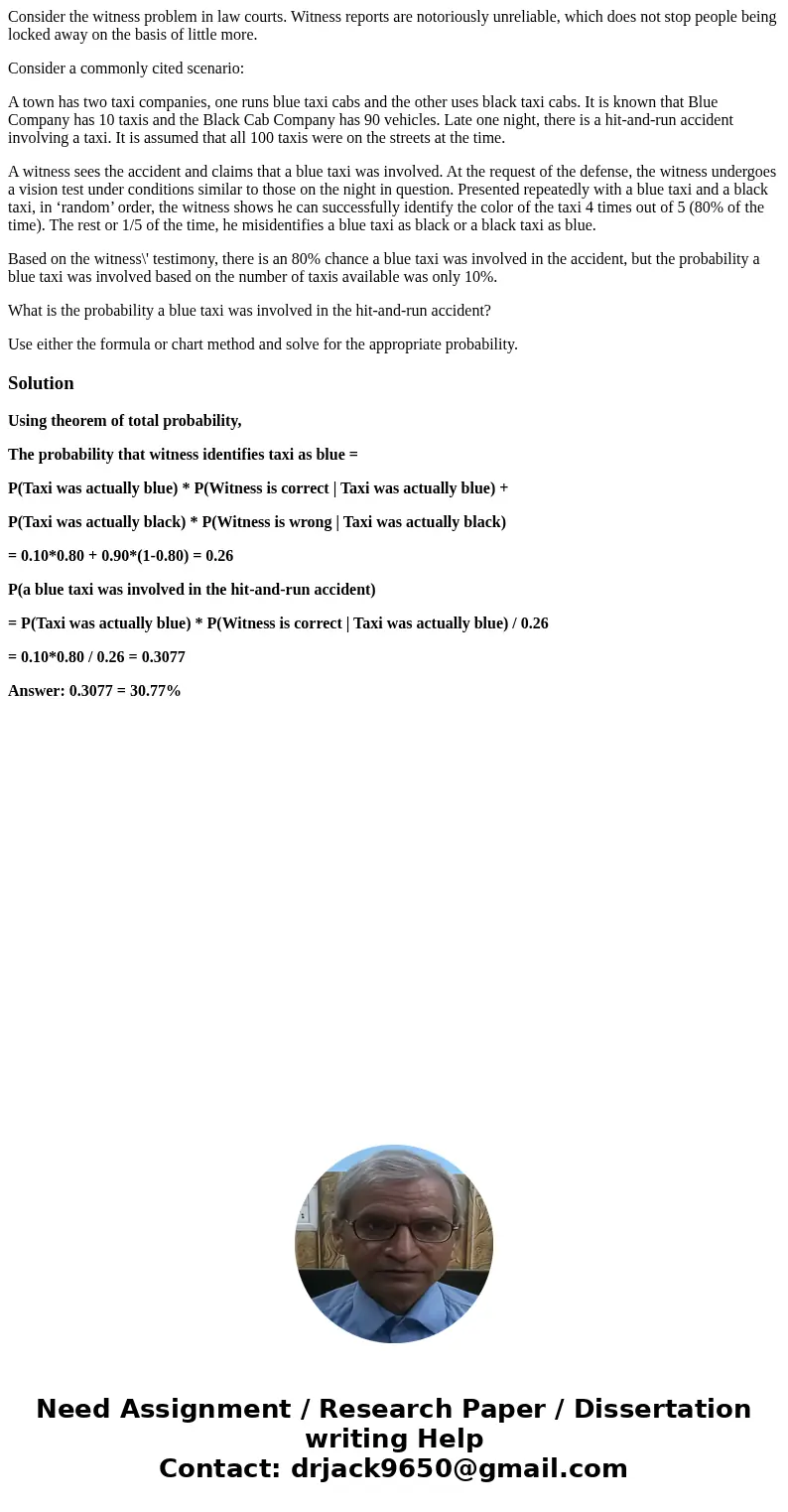Consider the witness problem in law courts Witness reports a
Consider the witness problem in law courts. Witness reports are notoriously unreliable, which does not stop people being locked away on the basis of little more.
Consider a commonly cited scenario:
A town has two taxi companies, one runs blue taxi cabs and the other uses black taxi cabs. It is known that Blue Company has 10 taxis and the Black Cab Company has 90 vehicles. Late one night, there is a hit-and-run accident involving a taxi. It is assumed that all 100 taxis were on the streets at the time.
A witness sees the accident and claims that a blue taxi was involved. At the request of the defense, the witness undergoes a vision test under conditions similar to those on the night in question. Presented repeatedly with a blue taxi and a black taxi, in ‘random’ order, the witness shows he can successfully identify the color of the taxi 4 times out of 5 (80% of the time). The rest or 1/5 of the time, he misidentifies a blue taxi as black or a black taxi as blue.
Based on the witness\' testimony, there is an 80% chance a blue taxi was involved in the accident, but the probability a blue taxi was involved based on the number of taxis available was only 10%.
What is the probability a blue taxi was involved in the hit-and-run accident?
Use either the formula or chart method and solve for the appropriate probability.
Solution
Using theorem of total probability,
The probability that witness identifies taxi as blue =
P(Taxi was actually blue) * P(Witness is correct | Taxi was actually blue) +
P(Taxi was actually black) * P(Witness is wrong | Taxi was actually black)
= 0.10*0.80 + 0.90*(1-0.80) = 0.26
P(a blue taxi was involved in the hit-and-run accident)
= P(Taxi was actually blue) * P(Witness is correct | Taxi was actually blue) / 0.26
= 0.10*0.80 / 0.26 = 0.3077
Answer: 0.3077 = 30.77%

 Homework Sourse
Homework Sourse